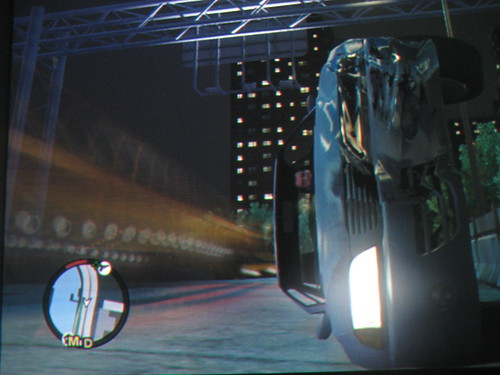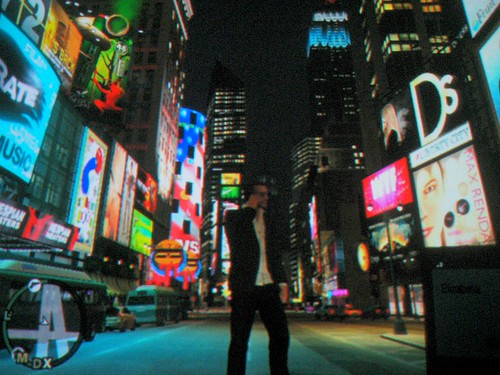TOM FRANCIS
REGRETS THIS ALREADY
Hello! I'm Tom. I'm a game designer, writer, and programmer on Gunpoint, Heat Signature, and Tactical Breach Wizards. Here's some more info on all the games I've worked on, here are the videos I make on YouTube, and here are two short stories I wrote for the Machine of Death collections.
Theme
By me. Uses Adaptive Images by Matt Wilcox.
Search
The City That Rarely Enters Sleep Mode
I’m wrapping up this triplet of GTA posts with the one I should have started with: why it’s worth talking about in the first place. I can’t agree with its most frequent criticism – that it’s merely the same game tweaked – because none of the three things that keep bringing me back to it were present in any meaningful sense in its predecessors. Those would be:

Online
Right now I have raw ache in the back of my throat, from laughing. Earlier this evening Tim actually cried. It’s probably the fourth or fifth time three or more of us have piled into the Free Mode map – just GTA sans missions, optionally sans police, and plus de joueurs. And so far it seems like our vocal chords will wear thin before the game mode does.
The objective-based modes are fine, but they’re just fun missions in which you can also do ridiculous stuff. Free mode is based around our own objectives. They don’t have to be particularly well-conceived ones. Tim wanted to know if a bike could jump through the doors of a helicopter. Rob wanted to know how many of us – each with varying Wanted levels – could ride together in a bus. I wondered if we could accurately bail from maximum-altitude helicopters above Central Park and land safely in the lake.
No, all of us, and no. What we did discover was that a helicopter propellor will swat an airbourne moped far enough that, even after the laughter had died down, I was able to truthfully say “Guys, I still haven’t landed.” And that while a bus makes a forceful and hardy getaway vehicle, there’s only so long it can wait for me to fumble with its diabolical automatic door under a monsoon of gunfire and a barrage of unbraking black-and-whites before it really ought to get going. And that, on a breezy day, ensuring your helicopter is geostationary over a large body of water is no guarantee that you’ll land in it when you bail.

New York
Liberty City – this Liberty City – is faithful to New York on a level GTA has never tried before. As well as the structure and detail, it captures the character and subtlety of a real place that games struggle to make up.
New York is my favourite place, and having a digital replica lets me explore it in ways I couldn’t even if I lived there. I don’t like to call these things too soon, but I don’t think I’ll ever actually find myself superbiking through Times Square in a thousand dollar suit. I hope I’ll never have to snipe Union workers down by Pier 45. And though the urge to throw myself off the Empire State enters my mind every time I top it, I can’t imagine it would really be as fun as it was in GTA IV. Doing these things gives me a feel for New York I couldn’t get otherwise, even if I spent significantly more on a trip there than I did on this console. It’s a new, cheap, bloody form of holiday.
So Rockstar can’t take all the credit for its exquisite sense of place, looming scale, gently fading ambience, but we get the full effect. It’s a city you can almost smell. So many different parts of it are beautiful in so many different ways, at so many different times. The runway lights at Francis bleeding blindingly into the mist on a foggy morning, Central Park blushing amber at sundown, rain-slick midtown Manhattan festive with red brake lights reflected in the wet tarmac, Times Square mall-bright in the dead of night, and the lazy, immobilising heat buzzing off the cracked streets of Broker on a dazzling day.
Next to the majesty of the city they built to set it in, GTA’s actual game seems puerile and sad. You could write an epic in this place, it could have a force and resonance we’re not used to. Violence could mean something here, it could be shocking again, and provoke something from us. That’s partly why I can’t join the chorus praising Rockstar’s storytelling; an arbitrary variety-show of charicatures, taking turns to step up on a non-interactive stage to tell a meandering story so apparently slave to the episodic mission structure that it’s impossible to believe in. It’s not that it’s worse than a typical game story – nothing is – it’s just unworthy of this setting.
Police AI isn’t the next one. But if you watch my legs adjust to the bounce of the rowboat I’m crouching in, you can see – even through the abysmal video quality – a bit of Euphoria going on.
Euphoria
Traditionally, people in games are acting out pre-recorded animations until they’re killed, whereupon a simple mechanical physics system takes over to simulate how their limp body falls and how it reacts to what it hits on the way down. That means any time a game character collides with something his pre-defined animations didn’t account for, the developers have to decide whether he should fail to react to it at all, or die.
GTA IV is the first major game that can handle the in-between cases. It licenses a piece of witchcraft called Euphoria that can blend physical simulation in with set animations, so that whenever anything hits anyone, they’ll be knocked by it in a physically convincing way, react to it in a humanly convincing way, then return smoothly to one of their normal animations. I have no idea how it works.
Actually, I know almost exactly how it works – anyone who’s thought about this problem for a second since the birth of 3D gaming could tell you how the eventual solution would have to work. The mystery is how the hell it ended up running smoothly on a home console. It’s essentially having to simulate the musculature of the human body in real-time, plug that into a mechanical physiscs system and motion-captured animation, and then make it work on as many interacting bodies as you care to run down in one spree. On a system where some developers won’t use ragdoll because it’s too processor-intensive.
The upshot for the player is the most reactive game I’ve ever seen, and a proper milestone in the progress of game ‘feel’. Both of my other obsessions in this game – our suicidal crash-tests and the intense impression of existing within this city – draw their power from the physicality Euphoria lends to every interaction in the game.
Achievement unlocked: wrote about GTA IV for one thousand words without mentioning the phrases ‘American Dream’, ‘fresh off the boat’, or ‘living breathing city’.
More GTA IV